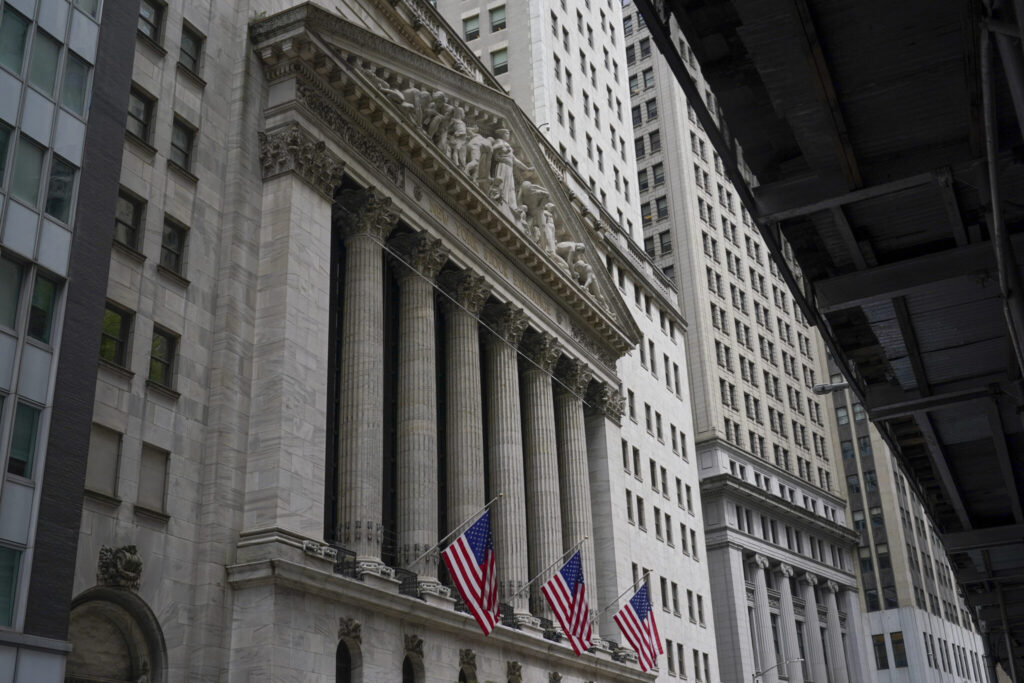A holiday-staggered week for U.S. markets looks like picking up where a bumper first half of the year ended on Friday, with Tesla wowing the gallery with impressive delivery stats. Tesla stock zoomed 5% higher ahead of Monday’s open, beating forecasts with record deliveries in the second quarter that were 83% up on the prior year and up 10% on the first quarter. The Associated Press has the story:
Wall Street tips lower ahead of July 4th holiday
Newslooks- (AP)
Markets tipped lower Monday ahead of a holiday-shortened session with little corporate news or economic data expected until later in the week.
Futures for the Dow fell 0.2% and the S&P 500 inched 0.1% lower.
U.S. trading will close by 1 p.m. Eastern on Monday and markets are closed for Independence Day holiday. The bond market will close at 2 p.m., and will also remain closed Tuesday.
Tesla shares jumped more than 6% before the opening bell after the electric car maker reported over the weekend that second-quarter deliveries rose 83% from a year ago. Sales spiked after the company cut prices and buyers took advantage of U.S. government tax credits.
The Austin, Texas, car maker sold a record 466,140 vehicles worldwide from April through June, nearly doubling the 254,695 it sold during the same period a year earlier. Analysts polled by data provider FactSet expected Tesla to deliver 445,000 cars in the quarter.
On Wednesday, the Federal Reserve will release minutes from its most recent meeting, when it chose not to raise its benchmark interest rate for the first time in 15 months.
A deluge of labor data follows, with the weekly layoffs report and May job openings data on Thursday and the June jobs report coming Friday.
On Friday, S&P 500 climbed 1.2% to 4,450.38, its highest level since April 2022 after a report showed a measure of inflation that the Fed prefers to use eased in May. It also said growth in spending by consumers slowed by more than expected. If fewer dollars are chasing after purchases, that could remove more pressure on inflation.
Investors are hoping price increases will ease enough for the Federal Reserve to soon halt its hikes to interest rates. That would mean less pressure for the U.S. economy and for global financial markets.
The Federal Reserve has already raised rates a mammoth 5 percentage points from virtually zero early last year. Traders on Wall Street have pared back bets that the Fed may hike interest rates twice again this year, with the majority wagering the federal funds rate will be only 0.25 percentage points higher at the end of 2023, if it all, according to data from CME Group.
The S&P 500 closed out its sixth winning week in its last seven in June and its best month since October. The index’s gain of nearly 16% through the first six months of the year is better than it’s done in 16 of the last 23 full years.
Other data showed that inflation in Europe slid again in June, with the annual rate at 5.5%, down from 6.1% in May in the 20 countries that use the euro currency, the European Union statistics agency Eurostat reported.
That’s an improvement but not enough to offer much relief to shoppers grumbling over price tags or to stop more interest rate hikes that will raise the cost of borrowing across the economy.
At midday in Europe, Germany’s DAX fell 0.2%, the CAC 40 in Paris edged up 0.1% and Britain’s FTSE 100 rose 0.4%.
In Asia, too, central banks have begun holding steady or easing rates to counter slowing economic activity. Vietnam and China have been cutting rates, while other countries are seeing manufacturing activity cool as demand for exports weakens.
In Asian trading, Japan’s benchmark Nikkei 225 rose 1.7% to 33,753.33 in afternoon trading. Australia’s S&P/ASX 200 added 0.6% to 7,246.10. South Korea’s Kospi jumped 1.5% to 2,602.47. Hong Kong’s Hang Seng surged 2.1% to 19,306.59, while the Shanghai Composite gained 1.3% to 3,243.98.
The quarterly “tankan report” of business sentiment compiled by the Bank of Japan showed an improvement for the fifth consecutive quarter, from June last year, with the main indicator number rising by 3 points to plus 23.
In energy trading, benchmark U.S. crude picked up 77 cents to $71.41 a barrel in electronic trading on the New York Mercantile Exchange. Brent crude, the international standard, advanced 70 cents to $76.11 a barrel.
In currency trading, the U.S. dollar rose to 144.83 Japanese yen from 144.30 yen. The euro cost $1.0902, down from $1.0924.
On Friday, the Dow Jones Industrial Average rose 0.8% and the Nasdaq composite jumped 1.4%.







